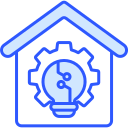This website uses cookies so that we can provide you with the best user experience possible. Cookie information is stored in your browser and performs functions such as recognising you when you return to our website and helping our team to understand which sections of the website you find most interesting and useful.

The Role of Sustainability in Smart Home Innovations
Sustainability has become a driving force in the evolution of smart home innovations, shaping how technology is designed, integrated, and utilized within residential environments. As global concerns about environmental impact and resource consumption intensify, homeowners and developers alike are prioritizing solutions that balance modern comfort with environmental responsibility. Smart homes are emerging not just as symbols of technological advancement but also as beacons of sustainable living, optimizing resource use and reducing ecological footprints. This webpage explores how sustainability is woven into the very fabric of smart home technologies, from energy management to material choices and the promotion of ecologically mindful lifestyles.
Integrating Energy Efficiency in Smart Home Design
Sustainable Material Selection and Smart Construction

Enhancing Water Conservation with Smart Technology


